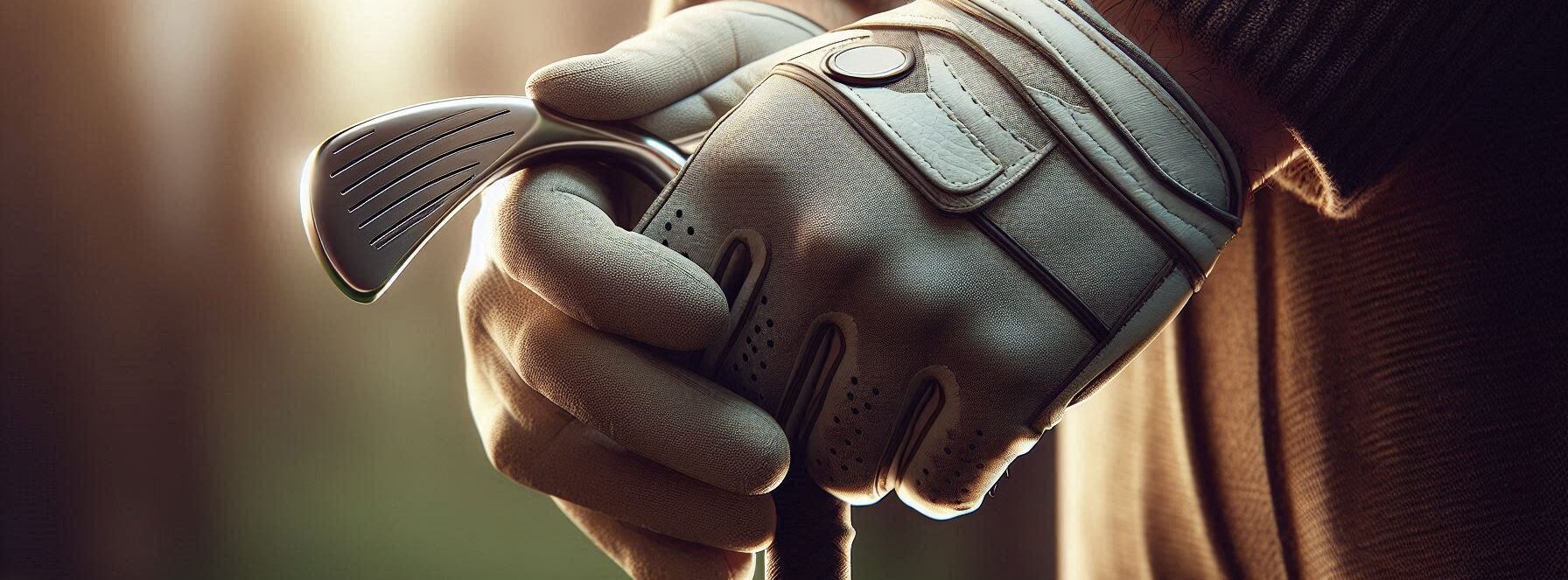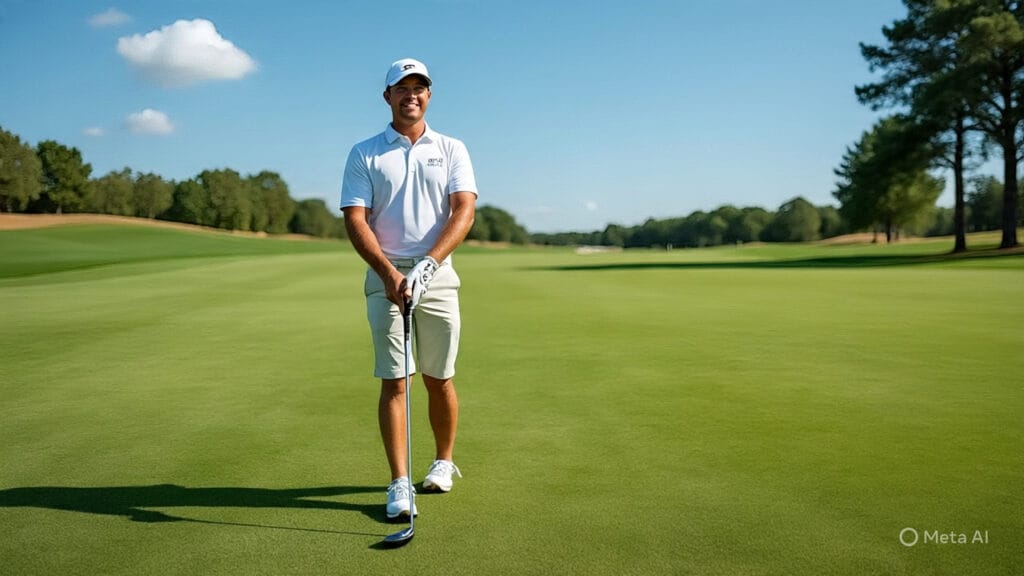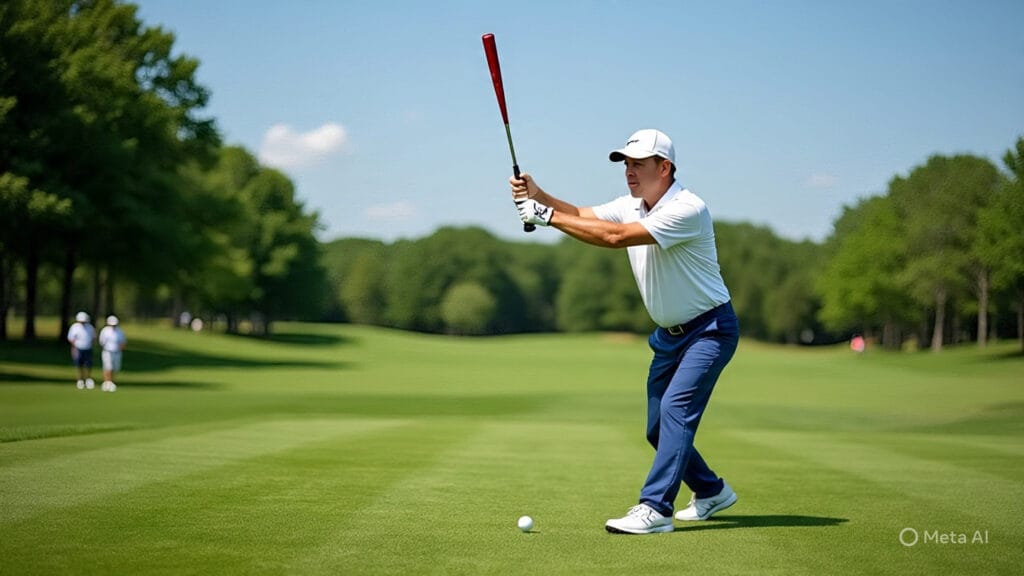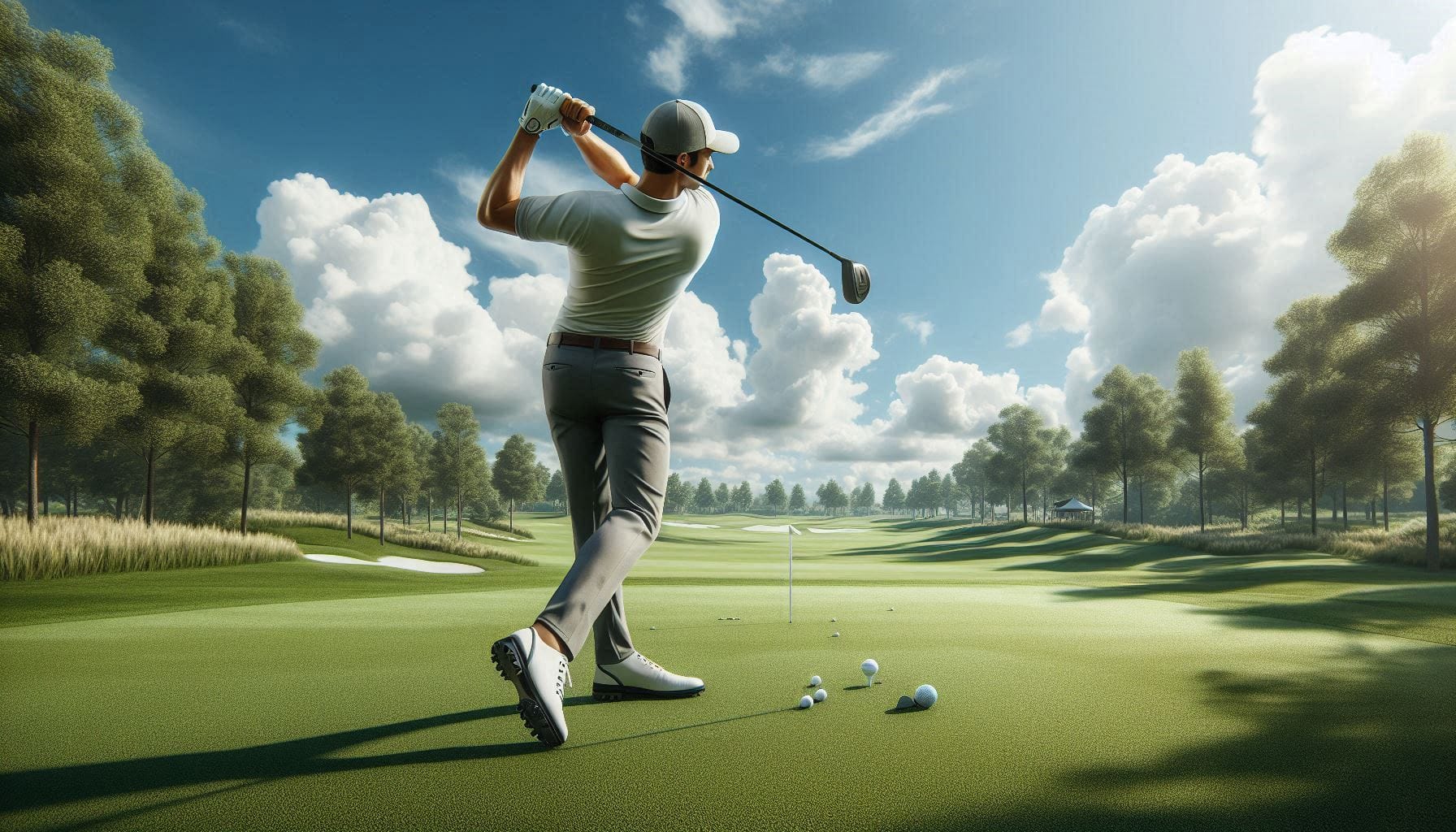Top Takeaways and Key Concepts
Please Note: This post may contain affiliate links. If you click one of them, we may receive a commission at no extra cost to you. As an Amazon Associate, I earn from qualifying purchases.
→ Experiment with different grip styles to find what feels most natural and comfortable.
→ Keep your hands relaxed to improve control and prevent tension during swings.
→ Check your thumb and finger alignment before every swing for consistent accuracy.
→ Maintain steady grip pressure—firm but not tight—for smoother, more reliable shots.
→ Practice your grip regularly to build muscle memory and boost performance.
Summary of This Article
Getting your golf grip right can transform your entire game. This article shows how small tweaks in pressure, hand placement, and grip type can mean straighter, stronger shots. You’ll learn how to relax your hands, choose the best grip for your style, and build confidence every time you step up to swing.
Video Summary
You know, if you’ve ever watched a pro golfer swing, it looks so easy, right? Their grip seems super relaxed. But that grip is really the key to how well they play.
I remember my buddy Tom trying to copy Phil Mickelson’s swing. Oh boy, what a sight! Spoiler alert: his ball went straight into a tree. We spent the next hour trying to get it down while joking about whether golf should come with a safety warning. It was kind of hilarious and frustrating at the same time!
Let’s talk grips for a minute. A good grip can change everything. It helps you control the club better and hit straighter shots. If your grip is too tight, you might end up with wild swings—like Tom's tree adventure!
Try this: hold your club gently but firmly. Imagine you're shaking hands with someone—a nice, friendly shake! You don’t want to crush their hand, but you also want them to feel your strength.
When you find that sweet spot in your grip, it feels different. You’ll notice more control over your shots. It's like magic!
Practice makes perfect here too. Spend some time just working on your grip before hitting balls. Feel how it changes as you swing.
Remember, we’re all learning together on the course! So let’s keep having fun and sharing laughs—even when things go sideways like Tom's tree saga! Who knows? Maybe one day we’ll be out there swinging like pros ourselves!
Understanding the Importance of Grip

First of all, why is grip so important? Well, think of your grip as the handshake between you and your club. It should be strong enough to convey confidence but not so tight that your fingers might lose blood flow.
A good grip makes sure that every shot begins off on the right foot, or rather, with the appropriate hands.
It's interesting that a lot of golfers don't pay attention to this important part of their game. They run onto the course with excitement (or maybe just caffeine) and forget to check if they're holding their clubs the right way.
Did you know that even small changes in how hard you hold the club can make a big difference in how the ball flies? Yes, it's true! If your shots have ever gone left or right like they're trying out for a circus act, it might be time to think about how you're holding that club.
There are three basic types of grips: overlapping, interlocking, and ten-finger (or baseball). Depending on the size of your hands and what you want, each has its own pros and cons. Let's see how each one works!
The Overlapping Grip

The overlapping grip is like the iconic rock band of grips that everyone knows about. For this method, put the pinky finger of your trailing hand over the index finger of your lead hand. It makes a strong connection between both hands without making them feel overly tight.
This grip is a favorite for the pros. It helps them control their strokes better, which is super important when you’re out there on the course.
I remember trying this grip after binge-watching a ton of YouTube videos. My pinky was all over the place, doing some kind of dance instead of sitting still! It was pretty funny, honestly. But once I finally got it right, wow! My shots became way more consistent.
If you're like me and sometimes feel tense while swinging (who doesn’t?), an overlapping grip can really help you chill out. It lets you hold the club a bit looser, which feels nice. No one wants to be stiff while playing golf, right?
The goal here is comfort and fluidity. Just think about how nice it feels when everything flows together smoothly. Keep experimenting until you find what feels best for you! Golf should be fun, not stressful!
The Interlocking Grip

Now let's talk about the interlocking grip. Golfers with smaller hands or who desire more stability like this grip.
In this way, you cross your pinky and index fingers on both hands. It's like forging a link that can't be broken, like friendship but not as sweet.
When I initially tried this grip at my local driving range, it felt incredibly close and comfy with my club. We were almost like best friends or something!
I was surprised at how much better my accuracy got after I made that tiny change. I tell myself, “I've got this!” and cross my fingers before each shot. That feels great!
However, not everyone thinks that interlocking grips are a good idea. Some players don't like it as much since their hands are big or strong. That's okay!
It's important to find out what works for you in golf. You may test out different grips and techniques, so go ahead. Change things up a bit! You might discover something that makes your game even better. Keep trying new things until you find the one that works best for you! It's like trying on shoes; you might have to try on a few pairs before you find the correct one.
The Ten-Finger Grip

Last but not least, we have the ten-finger or baseball grip! This approach is just what it sounds like: you hold the club with all 10 fingers, like you would hold a bat during minor league games (but without the memory of getting dirt on your hands).
It's strange that a lot of beginners prefer this grip. It doesn't seem hard or strange, does it? But don't let that fool you. It is quite strong! A lot of players use different versions of it when they need to make tough shots, especially around the greens where a gentle touch is vital.
When you get better at your game, you might want to test other grips. If you solely use this one, it can be hard to move ahead. Advanced methods generally need grips that are harder to use correctly.
Think about how hard it would be to build a beautiful dessert with just one component. You need more than just flour, right? That is also how golf works. The more skills you gain, the more options you'll have. If you switch things up, you can get some excellent pictures!
This grip is great for now, but as you get better at the game, keep exploring for new ways to hold the club. You never know what interesting stuff you'll find. Remember that even slight alterations might cause big surprises on the course!
Finding Your Perfect Grip Pressure

Now that we've talked about different kinds of grips, let's talk about something just as important: grip pressure! Have you ever noticed that holding on too tightly might lead to terrible things?
Imagine trying out for “America's Got Talent” while holding an ice cream cone. You either squeeze too hard or drop everything!
You know, when swinging a club, finding the right grip pressure is key. Think of Goldilocks—your grip should feel just right. Not too tight and not too loose!
When you practice with different pressures, it’s like training your muscles to remember what feels good. Over time, you'll start getting the same great results every time you step up to hit that ball. How cool is that?
Try out those different grips while practicing before hitting the course. It makes a big difference! There are so many distractions out there—like that squirrel who seems really interested in your swing. You want to be ready for anything.
Believe me, working on this can save you strokes later on. Less frustration means more fun! And who doesn’t want to enjoy their time out there? Just keep at it, and soon enough, you’ll see how much smoother everything goes!
Conclusion: Your Journey Begins Here
Wrapping things up? Not really my style! Perfecting your grip is way more than just holding onto the club right. It’s about feeling good and confident while you play. That makes a huge difference!
Trying out different grips can be fun. You can go for overlapping or interlocking styles, whatever feels best for you. Just pay attention to how much pressure you’re using. When you find what works, it’s like discovering hidden talents waiting to shine on the course!
Next time you're scrolling through flashy swings online, take a moment to think about the basics first. Those simple things really matter. You don’t want to end up like poor Tom, chasing balls stuck in trees forever!
Golf is all about enjoying yourself and learning along the way. So let’s keep swinging, laughing, and maybe getting a little muddy too! Each round is an adventure waiting to happen, right?
Featured Snippet: The key to a perfect golf grip is finding balance—firm enough for control, yet relaxed enough for fluid swings. By experimenting with overlapping, interlocking, or ten-finger grips and maintaining steady pressure, golfers can improve accuracy, consistency, and confidence on every shot.
Frequently Asked Questions
What is the most common golf grip used by professionals?
The overlapping grip is the most common among pros. It connects both hands securely for control and smooth swing mechanics.
How do I know if my grip is too tight?
If your hands feel tense or your shots veer off target, your grip is likely too tight. A relaxed hold allows better control and accuracy.
Which grip is best for beginners?
The ten-finger or baseball grip is ideal for beginners. It feels natural and helps new golfers develop comfort and control.
Should I change my grip for different types of golf shots?
Yes, slight grip adjustments can improve fades, draws, or short-game shots. Experiment to see what delivers the best results for each situation.
How can I practice maintaining consistent grip pressure?
Spend time gripping your club at home or on the range, focusing on steady, comfortable pressure. Over time, muscle memory will make it natural.
Why does grip pressure affect my swing accuracy?
Too much pressure restricts motion, while too little causes instability. Finding that “just right” tension ensures smoother, more accurate shots.
Can switching grip types really improve my golf performance?
Yes, experimenting with grips helps discover what suits your hand size and swing style best. Even small adjustments can make a noticeable difference.
Suggested Resources:
Perfect Golf Grip Techniques
https://www.golfdigest.com/story/perfect-golf-grip-techniques
Grip Pressure Tips
https://www.golf.com/instruction/grip-pressure-tips/
Understanding Your Golf Grip
https://www.pga.com/news/golf-instruction/understanding-your-golf-grip

Kevin Collier is an avid golfer and contributing author at AIGolfTips.com, where he shares his passion for the game through expert tips, techniques, and gear reviews. With years of experience on the course, Kevin offers valuable insights for golfers of all skill levels, helping them improve their game and maximize their potential. Whether discussing swing mechanics or the latest in golf technology, Kevin's engaging approach aims to inspire and educate fellow golf enthusiasts to elevate their performance and enjoy every moment on the green.




